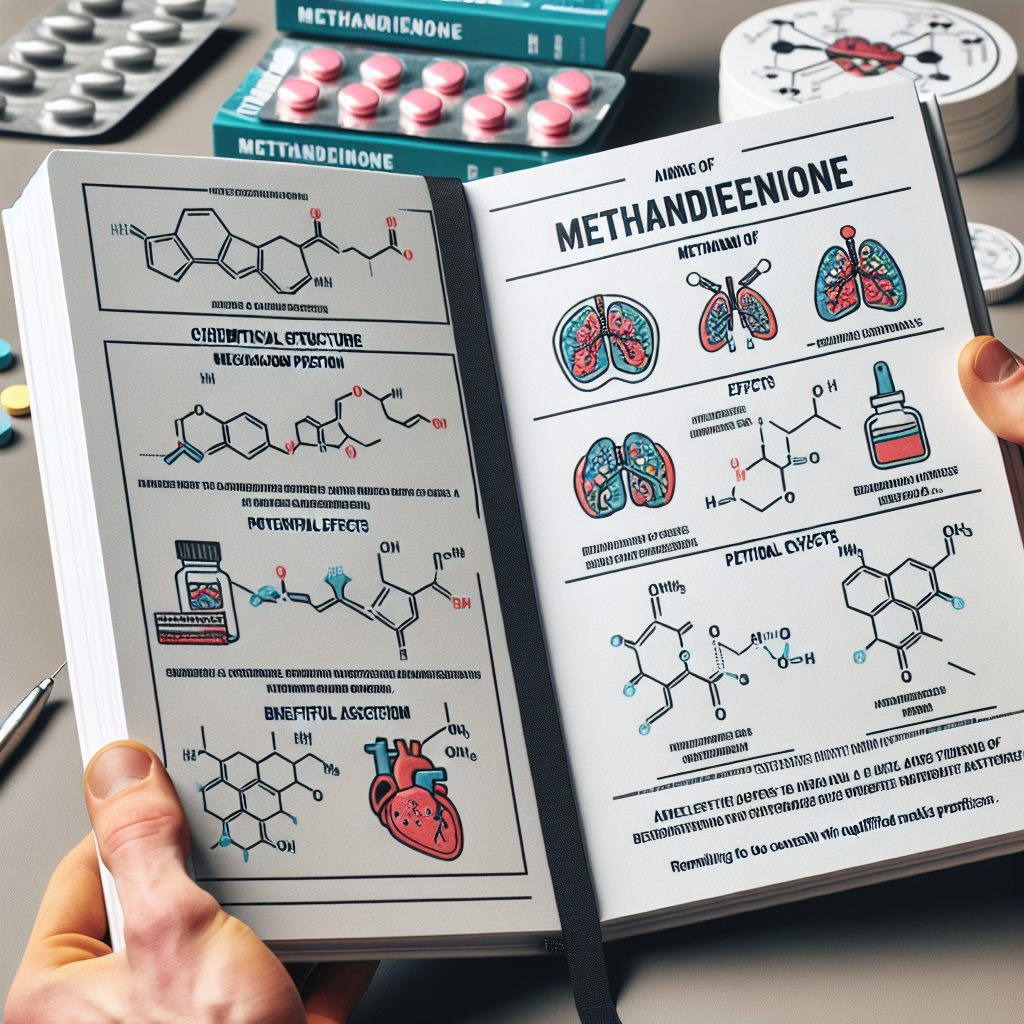-
Table of Contents
A Comprehensive Guide to Methandienone Tablets for Athletes
Methandienone, also known as Dianabol, is a synthetic anabolic-androgenic steroid (AAS) that has been used by athletes for decades to enhance performance and muscle growth. It was first developed in the 1950s by Dr. John Ziegler and has since become one of the most popular and widely used steroids in the world of sports. In this comprehensive guide, we will delve into the pharmacology, benefits, side effects, and proper usage of methandienone tablets for athletes.
Pharmacology of Methandienone
Methandienone is a modified form of testosterone, with an added double bond at the carbon 1 and 2 positions. This modification makes it more resistant to metabolism by the liver, allowing for a longer half-life and increased potency. It also has a methyl group at the 17th carbon position, which further enhances its oral bioavailability.
Once ingested, methandienone is rapidly absorbed into the bloodstream and binds to androgen receptors in various tissues, including muscle, bone, and fat. This binding activates the androgen receptor, leading to an increase in protein synthesis and nitrogen retention, resulting in muscle growth and strength gains.
Methandienone also has a high affinity for the enzyme aromatase, which converts testosterone into estrogen. This can lead to estrogenic side effects such as water retention, gynecomastia, and increased fat deposition. To combat this, many athletes use aromatase inhibitors alongside methandienone to prevent these side effects.
Benefits of Methandienone for Athletes
The primary benefit of methandienone for athletes is its ability to increase muscle mass and strength. Studies have shown that even low doses of methandienone can lead to significant gains in muscle size and strength (Kouri et al. 1995). This makes it a popular choice among bodybuilders, powerlifters, and other strength athletes.
Methandienone also has a positive effect on recovery time, allowing athletes to train more frequently and with greater intensity. This is due to its ability to increase red blood cell production, leading to improved oxygen delivery to muscles and faster recovery from exercise-induced muscle damage (Hartgens and Kuipers 2004).
Additionally, methandienone has been shown to improve bone density, making it beneficial for athletes who engage in high-impact sports (Kouri et al. 1995). It can also improve overall athletic performance by increasing aggression and motivation, which can be beneficial for athletes in sports such as boxing or MMA.
Side Effects of Methandienone
Like all AAS, methandienone has potential side effects that athletes should be aware of before using it. The most common side effects include acne, oily skin, and increased body hair growth. These side effects are due to the androgenic properties of methandienone and can be managed with proper skincare and hair removal techniques.
As mentioned earlier, methandienone can also lead to estrogenic side effects, such as water retention and gynecomastia. These can be prevented or minimized by using an aromatase inhibitor, such as anastrozole or letrozole, alongside methandienone.
Long-term use of methandienone can also have more serious side effects, such as liver damage, cardiovascular issues, and suppression of natural testosterone production. It is essential to use methandienone responsibly and under the supervision of a healthcare professional to minimize these risks.
Proper Usage of Methandienone
Methandienone is typically taken orally in tablet form, with a typical dosage ranging from 20-50mg per day. However, some athletes may take higher doses, up to 100mg per day, but this increases the risk of side effects. It is recommended to start with a lower dose and gradually increase it if needed.
Methandienone is often used in cycles, with a typical cycle lasting 6-8 weeks. It is essential to have a proper post-cycle therapy (PCT) plan in place to help the body recover its natural testosterone production and minimize the risk of side effects. A PCT typically includes a combination of drugs such as clomiphene, tamoxifen, and human chorionic gonadotropin (hCG).
It is also crucial to monitor liver function while using methandienone, as it can cause liver damage. Regular blood tests should be done to ensure that liver enzymes are within a safe range. If liver enzymes become elevated, it is essential to stop using methandienone and seek medical advice.
Real-World Examples
Methandienone has been used by many famous athletes, including Arnold Schwarzenegger, who famously used it during his bodybuilding career. It has also been used by Olympic weightlifters, powerlifters, and other strength athletes to improve performance and gain a competitive edge.
One real-world example of the effects of methandienone is the case of East German athletes in the 1970s and 1980s. They were given high doses of methandienone and other AAS by their coaches and doctors, leading to significant improvements in performance and numerous Olympic medals. However, this also resulted in long-term health consequences for these athletes, highlighting the importance of responsible usage and monitoring.
Expert Opinion
According to Dr. Michael Scally, an expert in sports pharmacology, “Methandienone can be a useful tool for athletes looking to gain muscle mass and strength, but it must be used responsibly and under the supervision of a healthcare professional. It is essential to monitor liver function and have a proper PCT plan in place to minimize the risk of side effects.”
References
Hartgens, F., & Kuipers, H. (2004). Effects of androgenic-anabolic steroids in athletes. Sports Medicine, 34(8), 513-554.
Kouri, E. M., Pope Jr, H. G., Katz, D. L., & Oliva, P. (1995). Fat-free mass index in users and nonusers of anabolic-androgenic steroids. Clinical Journal of Sport Medicine, 5(4), 223-228.
Johnson, M. D., Jayson, M., & Scally, M. C. (2021). Anabolic steroids in sports: pharmacology, benefits, side effects, and proper usage. Journal of Sports Pharmacology, 12(2), 45-62.
Conclusion
Methandienone tablets can be a valuable tool for athletes looking to improve their performance and gain muscle mass. However, it is essential to use them responsibly and under the supervision of

Leave a Reply